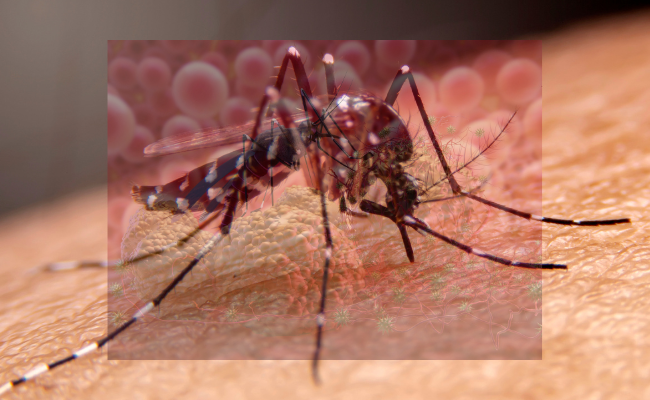How to Treat Malaria Non Severe?
- January 13, 2024
- No Comments

What is Malaria Non-Severe?
malaria Non-severe refers to cases where the symptoms are not immediately life-threatening. Common symptoms include fever, chills, sweats, headaches, and muscle aches. It is crucial to identify and treat non-severe malaria promptly to prevent the progression to severe malaria, which can lead to complications such as organ failure and even death.
Why is Treating Malaria Non-Severe Important?
Timely treatment of non-severe malaria is essential to prevent the progression of the disease into a severe and life-threatening form. Malaria can quickly escalate, leading to severe complications if left untreated. Additionally, treating non-severe cases helps reduce the overall burden of the disease in communities, preventing its spread and impact on public health.
How to Identify Malaria Non-Severe?
Non-severe malaria can be identified based on symptoms such as fever, which is a hallmark sign of the disease. Other symptoms may include chills, sweats, headaches, and muscle aches. Laboratory tests, such as blood smears, can confirm the presence of Plasmodium parasites in the blood and determine the specific species causing the infection.
Treatment Solutions for Malaria Non-Severe:
The most common and effective treatment for non-severe malaria is the use of antimalarial medications. The choice of medication depends on the type of Plasmodium parasite causing the infection and its sensitivity to specific drugs. Common antimalarial drugs include chloroquine, artemisinin-based combination therapies (ACTs), and other antimalarial medications prescribed by healthcare professionals.
- Mechanism: ACTs are currently the most effective and widely recommended treatment for uncomplicated malaria. They combine an artemisinin derivative with another antimalarial drug.
- Rationale: Artemisinin and its derivatives have a rapid onset of action and can quickly reduce the parasite load, while the partner drug helps to eliminate the remaining parasites and prevent the development of resistance.
Chloroquine:
- Mechanism: Chloroquine was historically a widely used antimalarial drug. It works by accumulating in the parasite's food vacuole, disrupting its ability to break down hemoglobin and leading to the parasite's death.
- Rationale: Chloroquine is effective against some species of malaria parasites but is no longer recommended as a first-line treatment in areas where resistance is prevalent.
Antifolate Drugs (e.g., Sulfadoxine-Pyrimethamine):
- Mechanism: These drugs interfere with the parasite's ability to synthesize DNA by inhibiting folate metabolism.
- Rationale: While these drugs were once commonly used, resistance has emerged in many areas, limiting their effectiveness. They may still be used in specific cases or regions where they remain effective.
Atovaquone-Proguanil:
- Mechanism: This combination drug interferes with the electron transport chain in the malaria parasite, disrupting its energy production.
- Rationale: Atovaquone-proguanil is an alternative treatment, particularly for regions where resistance to other antimalarials is prevalent.
Quinine:
- Mechanism: Quinine has been used for centuries and works by interfering with the parasite's ability to break down hemoglobin.
- Rationale: Quinine is sometimes used when other antimalarials are not suitable or available. It is often reserved for pregnant women in the first trimester.
Dihydroartemisinin-Piperaquine:
- Mechanism: This is another artemisinin-based combination therapy, combining dihydroartemisinin with piperaquine
Benefits of Timely Treatment for Malaria Non-Severe:
- Prevention of Disease Progression: Non-severe malaria, if left untreated, can progress to severe forms, such as cerebral malaria, which can be fatal. Timely treatment helps prevent the progression of the disease and reduces the risk of complications.
- Symptom Relief: Malaria is associated with symptoms such as fever, chills, headaches, and fatigue. Timely treatment helps alleviate these symptoms, providing relief to the patient and improving their overall well-being.
- Reduced Transmission: Prompt treatment not only benefits the individual but also plays a crucial role in reducing the transmission of malaria within the community. Infected individuals who receive timely treatment are less likely to serve as a source of the parasite for mosquitoes, helping to break the cycle of transmission.
- Prevention of Anemia: Malaria can cause anemia, especially in children and pregnant women. Timely treatment helps in controlling the parasitic infection, reducing the risk of severe anemia associated with malaria.
- Cost-Effectiveness: Early detection and treatment of non-severe malaria are often more cost-effective than managing severe cases or complications. Timely intervention can prevent the need for expensive medical interventions and hospitalizations.
- Preservation of Immune System: Timely treatment allows the immune system to respond effectively to the infection. If the infection is promptly addressed, the immune system can better control the parasite, preventing recurrent bouts of malaria.
- Prevention of Drug Resistance: Delayed or incomplete treatment can contribute to the development of drug-resistant strains of the malaria parasite. Timely and appropriate treatment helps minimize the risk of drug resistance, ensuring that available antimalarial drugs remain effective.
Comments (0)